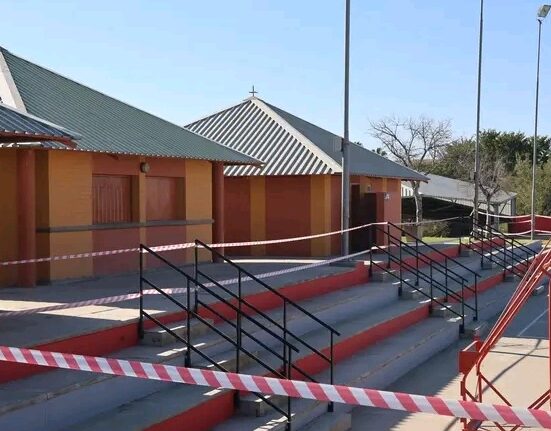Namibia, with its vast landscapes and rich natural resources, is not just a country of geographical beauty but also of youthful promise. Over half of its population is under the age of 25, making Namibia one of the youngest nations in the world. This demographic trend presents both incredible opportunities and significant challenges for the country. Harnessing the potential of its youthful population could lead to economic growth, innovation, and social transformation. However, if not managed effectively, it could also result in unemployment, social unrest, and a strain on resources.
This article explores the opportunities and challenges posed by Namibia’s youthful population and the steps being taken to secure a brighter future for its young citizens.
The Demographics of Namibia’s Youth
According to the 2023 national census, over 60% of Namibia’s population falls under the age of 30, with the majority concentrated in urban centers such as Windhoek, Walvis Bay, and Rundu. This youthful demographic is characteristic of many African nations, driven by high fertility rates and declining mortality rates due to advancements in healthcare.
While this youthful population is a potential driver of economic and social change, it also presents a ticking time bomb if not harnessed appropriately.
Opportunities Presented by Namibia’s Young Population
1. Economic Growth and Innovation
A young population represents a potential workforce that, if educated and skilled, can drive economic growth. Namibia has the chance to capitalize on its youth’s creativity, energy, and adaptability to new technologies. The government’s focus on entrepreneurship, vocational training, and STEM (Science, Technology, Engineering, and Mathematics) education aligns with the need to prepare young people for a dynamic global economy.
2. Digital Transformation
Namibia’s youth are at the forefront of digital adoption. The proliferation of smartphones and social media has made young Namibians more connected than ever before. This digital savviness can be leveraged to boost e-commerce, innovation, and access to education and healthcare through digital platforms.
3. Cultural Preservation and Growth
Young Namibians play a crucial role in preserving and celebrating the country’s diverse cultural heritage. By incorporating traditional values into modern practices, they are uniquely positioned to bridge the gap between Namibia’s past and its future.
4. Leadership Potential
Namibia’s young generation represents future leaders who can champion progressive policies, address social inequities, and drive sustainable development. With increasing political awareness among young people, there is hope for a more inclusive and representative governance structure in the coming decades.
Challenges Facing Namibia’s Youth
1. High Unemployment Rates
Youth unemployment in Namibia remains a significant concern, with rates exceeding 40% in some regions. The mismatch between educational outcomes and labor market demands exacerbates this issue. Many young Namibians find themselves without the skills or opportunities needed for meaningful employment, leading to frustration and disillusionment.
2. Education System Gaps
While Namibia has made strides in improving access to education, challenges remain in ensuring quality and relevance. Many schools in rural areas lack adequate resources, qualified teachers, and infrastructure. Furthermore, the focus on theoretical knowledge rather than practical skills leaves many graduates ill-prepared for the job market.
3. Urbanization and Housing
The migration of young people from rural areas to urban centers in search of better opportunities has led to the rapid growth of informal settlements. This urbanization trend puts pressure on housing, sanitation, and public services, creating a host of socio-economic challenges.
4. Mental Health and Social Issues
The pressures of unemployment, poverty, and societal expectations have taken a toll on the mental health of many young Namibians. Substance abuse, gender-based violence, and high suicide rates among youth are growing concerns that require immediate attention.
5. Limited Access to Healthcare
While Namibia has made progress in expanding healthcare services, many young people in rural and remote areas still face challenges in accessing quality healthcare. Reproductive health services, in particular, need greater emphasis to address issues such as teenage pregnancies and sexually transmitted infections.
Government and Stakeholder Interventions
1. Youth Employment Initiatives
The Namibian government, in collaboration with international organizations, has launched several programs aimed at reducing youth unemployment. These include vocational training programs, public works projects, and incentives for businesses to hire young people.
2. Educational Reforms
Reforming the education system to align with market needs is a top priority. Emphasis is being placed on STEM fields, vocational training, and entrepreneurship to equip young Namibians with practical skills. Initiatives like the Namibia Training Authority (NTA) are pivotal in bridging the skills gap.
3. Digital Empowerment
The Harambee Prosperity Plan, introduced by the government, highlights digital transformation as a key area of focus. Efforts are being made to improve internet connectivity in rural areas, promote e-learning, and foster digital entrepreneurship among young people.
4. Mental Health and Social Support
To address the rising mental health issues among youth, Namibia is increasing investment in counseling services, awareness campaigns, and community support programs. NGOs and community-based organizations are also playing a critical role in tackling substance abuse and promoting mental well-being.
5. Youth Participation in Governance
Namibia is encouraging youth participation in politics and governance through initiatives such as the National Youth Council. Programs aimed at nurturing young leaders are crucial for ensuring that the voices of young Namibians are heard at the decision-making table.
The Road Ahead: Empowering Namibia’s Youth
Empowering Namibia’s young population requires a multi-faceted approach that addresses both immediate challenges and long-term goals. Here are some recommendations:
- Invest in Education and Skills Development: Strengthening the quality of education and expanding vocational training opportunities will prepare young Namibians for diverse careers.
- Promote Entrepreneurship: Providing access to funding, mentorship, and resources can help young people start their own businesses and create jobs.
- Enhance Mental Health Services: Increased investment in mental health infrastructure and awareness campaigns will ensure that young people receive the support they need.
- Strengthen Urban Planning: Addressing the challenges of urbanization will improve living conditions and create sustainable cities for future generations.
- Leverage Technology: Encouraging digital literacy and innovation will enable young Namibians to participate in the global economy.
Namibia’s youthful population is both a challenge and an opportunity. With over half of its citizens under 25, the country stands at a crossroads. By addressing the challenges of unemployment, education, and mental health, while harnessing the potential of its energetic and innovative youth, Namibia can secure a prosperous future.
The path forward requires collaboration between the government, private sector, and civil society to create an environment where young Namibians can thrive. If successful, Namibia’s youth will not only shape the nation’s destiny but also serve as a beacon of hope for the African continent.
Join 'Namibia Today' WhatsApp Channel
Get the breaking news in Namibia — direct to your WhatsApp.
CLICK HERE TO JOIN












